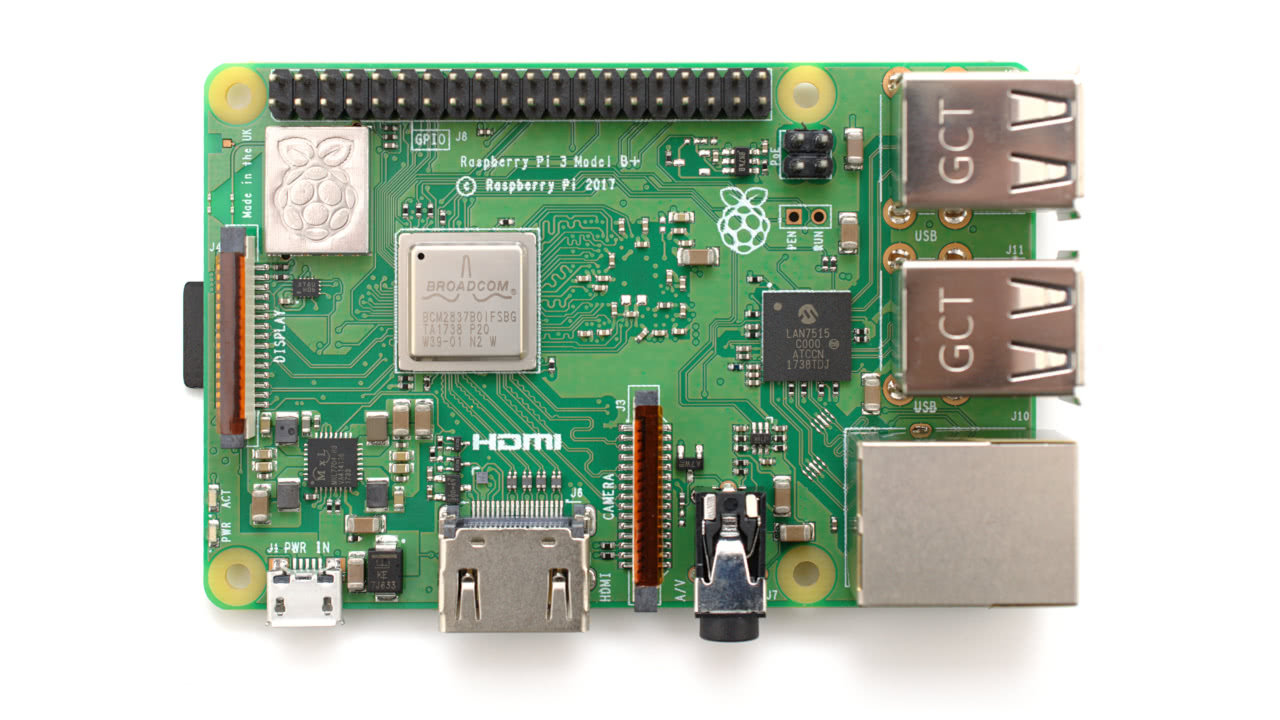The Raspberry Pi Foundation has today launched the Raspberry Pi 3 Model B+, a revision to its popular single-board computer (SBC) which brings with it a faster and cooler-running processor, gigabit Ethernet and 5GHz Wi-Fi connectivity, and support for Power over Ethernet (PoE).
Launched six years after the first Raspberry Pi Model B, a single-core Arm-based SBC running at 700MHz and with just 256MB of RAM, the Raspberry Pi 3 Model B+ – also known as the Pi 3 B+ – is a considerable upgrade. Building on its 1.2GHz quad-core 64-bit predecessor, the new design features a metal-encapsulated system-on-chip and thicker circuit board which combine with improved power management to provide a speed boost to 1.4GHz and the ability to run considerably cooler under sustained CPU load. The new design also includes gigabit Ethernet connectivity – though limited to around 220Mb/s of real-world throughput, thanks to a design which sees peripherals sharing a single USB 2.0 connection to the processor – with support for Power over Ethernet (PoE) upon connection of an add-on board, and a dual-band radio with 2.4GHz and 5GHz Wi-Fi connectivity along with Bluetooth 4.2 and Bluetooth Low Energy (BLE).
AB Open’s Andrew Back has analysed the changes between the Pi 3 and new Pi 3 B+ over on DesignSpark, while also offering a pair of practical projects well-suited to the board’s new capabilities: a remote software defined radio (SDR) and custom remote-sensing platforms, both of which benefit from the improved connectivity and processor performance.
Speaking of performance, a series of detailed benchmarks are available on Medium demonstrating the improvements made in a range of workloads. Also included are a thermal imaging analysis showcasing how the redesign and new package technology have improved upon the Broadcom BCM2837’s notoriously hot-running processor cores and a look at the power draw across the whole mainstream Pi family.
Finally, business-to-consumer electronics retailer Pimoroni has celebrated the launch with a range of interesting images, including clever ‘X-ray’ shots taken by prising the metal covers from the radio module and system-on-chip and overlaying the resulting pictures, along with layered images of the Pi 3 and Pi 3 B+ demonstrating the changes to the board’s layout – and the presence of the pre-populated PoE header and moving of the unpopulated Run header will be of particular interest to those who have built designs around the previous Pi 3 layout.
